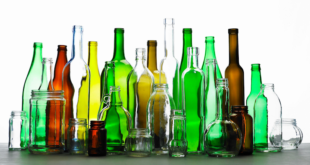The grape – where did it come from?
How did somebody figure out they could crush it, ferment the juice, and come up with wine? The answer to that is – nobody knows. The history of wine is a cloudy one, at least before 6000 B.C.
It’s been said that there was an awful lot of wine consumed in those days, so perhaps that’s why there wasn’t much recording of current happenings at the time. So we’ll outline what we do know about the major progressions of wine drinking and wine making throughout the years.
Wine was a good substitute for bad drinking water
In ancient times, there was no such thing as good drinking water. And since people wanted something to drink with their meals, wine was a wonderful alternative. There are some indications that wine was being produced as far back as 6000 B.C. in Mesopotamia.
Markings on stone tablets and tomb walls show evidence that the Mesopotamians had some idea of how to make wine from grapes. The wine was probably very crude compared to what we drink today, but it was better than the water available for drinking.
The people of ancient Egypt, in the time of the Pharaohs, worshiped the god Osiris, the son of Heaven and Earth, which means Lord of the vine in flower. They related his annual resurrection to the budding and blooming of grapevines every year.
Another thing they worshiped was the Nile River. The Nile regularly flooded its banks and, when it receded, it left rich, fertile soil behind. The Egyptians found they could grow flourishing grapevines on the banks and deltas of this powerful river. They trained them to grow up the trunks of trees, and watered them with skins, a slow but effective process.
The Egyptians refined the process of winemaking, somewhat, and produced very sweet red and white dessert wines. There are stories of Cleopatra seducing Antony with her alluring charms, but when you see the drawings of her pouring Antony goblets of wine, one wonders if perhaps she just plain old got him drunk.
So wine drinking was a popular thing – but only for the elite. The common people drank crude palm wine, or beer.
Winemaking spread throughout the Mediterranean
As the centuries passed, and the Roman Empire started to take its hold on the Mediterranean, the art of winemaking spread north. The drinking of wine was becoming more refined and it had similar effects on its drinkers.
Thucydides, the Greek historian, probably summed it up when, in the 5th century BC, he said “The peoples of the Mediterranean began to emerge from barbarism when they learnt to cultivate the olive and the vine.”
This philosophy that surrounded winemaking was carried with the Romans throughout their home country of Italy, then up through France, Spain, Germany and on to parts of Britain. Because wine was so much more readily available, there was enough for everyone, not just the upper class.
Corner bars became the norm in cities like Pompeii. But those without money for bar drinking still managed to imbibe, by combining vinegar and water (not much different from a really cheap wine of today).
The Romans preferred their wine sweet, not dry. They experimented with different ingredients, adding them for some pretty strange flavors – for wine anyway. Some examples of these additives were garlic, onion (typically Italian), and fermented fish sauce(?). There was a finer side to their additions, too, like Absinthe (very high in alcohol), rose petals, mint and pepper.
Pure wine was just not accepted in ancient Rome. Aren’t you glad you didn’t live back then?
Winemaking survived the Dark Ages, but was challenged again
As time moved on, the consumption of wine moved right along with it. Drinking water throughout the Dark Ages was still not very good, so wine was still the preferred alternative to have with meals.
One of the things that kept the wine industry alive was the spread of Christian monasteries throughout most of Europe. The monks found it relaxing to grow and groom vineyards in their monasteries. And it was a great source of free wine for their religious ceremonies.
As the art of winemaking progressed, a movement started towards stronger, heavier wines that weren’t so sweet. The French Bordeaux region was thriving, exporting wines around Europe. After England lost control of that area in the 14th century, they had to import their wines from Portugal and Germany.
The great bard, William Shakespeare, aptly described wine use during his time, when he said, “Good wine is a good familiar creature if it be well used.” Wine, in those days, was looked on with some controversy. “If it be well used” referred to social drinking of wine, but not getting drunk and raucous, as many did.
In Shakespeare’s time, many people drank beer. But those with more refined tastes began to look for lighter, more delicate wines. At the same time, good drinking water became available in London. People wanted wine as a civilized social drink, now that they didn’t have to drink it. The availability of good drinking water pushed the wine industry to its next phase.
The wine industry is challenged in the 17th and 18th centuries
In the 17th century, people found other sources for their excessive indulgences, like hard liquor, beer and ale, tobacco, chocolate, and coffee and tea. Wine had lots of competition – another challenge for the industry.
It was kind of ironic that the industry was actually forced to compete with itself, when it created Champagne. They now had to create wines of similar or better quality, using the same grapes they’d already been using.
Other important developments in the 17th century were the use of glass bottles, the invention of the cork, the cork screw and other accessories. Also, improved production techniques created more palatable wines. The wine industry was re-emerging.
In the 18th century, England wasn’t getting along with France, so they couldn’t get any of that good French wine. Since the British Empire was growing, they turned to their colonies for their supply.
At the turn of the century, they took over South Africa, which turned out to be a wonderful source of wine. In fact, Lord Nelson, a British commander, referred to the new British colony as an “immense tavern”.
Despite the Napoleonic Wars, the French wine industry managed to thrive. Bordeaux wines became the envy of winemakers everywhere, as they still are today. Superior-quality wines became the norm. Napoleon himself remarked well when he said, “In victory, you deserve Champagne. In defeat, you need it.”
The wine industry joins the progress of the 19th century
Another effect of the Napoleonic Wars was Britain’s adoption of Port as their wine of choice. At the time, their operations were based in Portugal, and because they couldn’t get their hands on any of that good French wine, they brought in Port, from the Portuguese island of Oporto.
Then, they discovered the Spanish city, Jerez, which was the home of Sherry, so they gradually replaced Port with Sherry. They found Sherry to be a lot more sophisticated, and a lot less associated with drunkenness.
Meanwhile, back in France, a French widow named Nicole-Barbe Clicquot-Ponsardin, discovered a simple method of removing sediment from Champagne, and adding in its place, wine, sugar and brandy. She also developed an assembly line, so it could be mass-produced.
With the discovery of the New World, Europeans immigrating to America brought their winemaking know-how with them. The industry was welcomed by Thomas Jefferson, who thought Americans drank too much hard liquor.
Ideal conditions for vineyards were found first in Ohio, but soon after, California took over as the premier wine-growing region in the country. In fact, California wines were so good that, in 1889, they won 20 of the 34 medals awarded in an international wine-tasting competition in Paris.
Around this time, Australia made their first mark on the wine industry when James Busby, an immigrant, began growing grapes in the Hunter Valley. You can still buy Hunter Valley wines today.
Back in France, another challenge arose for the wine industry – a vineyard disease called Phylloxera. This disease was actually caused by microscopic aphids which sucked the juice out of the roots. It was discovered that Phylloxera came from America, where it’s attack on American vines didn’t affect them.
So, the idea came up of propagating the American vine roots and exporting them to the French regions that had been attacked. This created a hybrid of different types of grapes which, in turn, created different and more varied wines.
The wine industry turned the negative Phylloxera setback into a positive turn – the creation of hybrid grapes. A whole new technology emerged surrounding this wonderful discovery. It also led to a massive replanting throughout Europe which, again, in turn, led to a wider variety of grapes.
The industrial age carries the wine industry along
As technological procedures advanced, the winemaking industry developed better methods for production, which created better and more varied types of wines. New storage techniques like refrigeration created a whole new process. Fermentation could be more controlled by varying temperatures at critical times in the process. Again, the results – better wines.
Machines were introduced to help pick the grapes. Harvesting became easier and faster. They could even harvest at night. This was a very helpful development, because the temperature of grapes when they’re picked is a very significant factor in the winemaking procedure.
As more advanced technology was introduced, winemakers found they could be in total control of the process, from harvesting to bottling.
The winemaking industry leads to an accessory industry
With wine bottles, there was always the search for the perfect way to open them. Corks aren’t easy to get out of the bottle, so Carl Wienke’s invention of the corkscrew way back in 1882, was indeed welcome.
The latest development in cork screws is the rabbit corkscrew, complete with foil cutter and automatic cork release. Or if you want to go retro, you can get an antique corkscrew, perhaps one with Andy Cap & Flo on it, or any number of other things from the past.
And now, with the shortage of the cork-oak tree, other materials have been experimented with as a replacement for corks. You’ll now find many plastic or rubber corks. And there’s another new development – glass corks, which will probably make their way into the common market fairly soon.
With the growing popularity of online shopping, you can get any wine accessory you want on the Internet. There are wine racks of all shapes and sizes. There are wine cellars – cooled environments with temperature controls to keep your wine at the optimum temperature for consumption.
To allow your wines to properly breathe, you can get the specific wine decanter for your particular wine-drinking occasion. And if you’re drinking any other liquor, there’s a liquor decanter to fit your choice of alcohol. And there’s a huge array of wine glasses available, like Waterford crystal, for example, or Lenox, Riedel, Ravenscroft, just to mention a few.
Have you ever sat at a table with a large number of people, all with the same style of crystal stemware? Don’t know which glass is yours? Then you can use one of the cute and useful glass wine charms or wine glass tags to identify your glass. They’re a great conversation piece.
And here’s one more idea that many people have adopted. Wine makes a wonderful gift. There are so many different wines, you can have fun making up your wine gift basket by adding cheeses and crackers and other little specialty food items that go with the wine you’ve included in the basket.
So now you’re up-to-date with the wine industry. But keep posted, because the industry is continually looking to improve on their quality and selection of fine wines. Keep trying the new ones. And keep enjoying your favorites. Cheers!
 Real Time News – Go Fan Boy All the news and information that matters
Real Time News – Go Fan Boy All the news and information that matters





